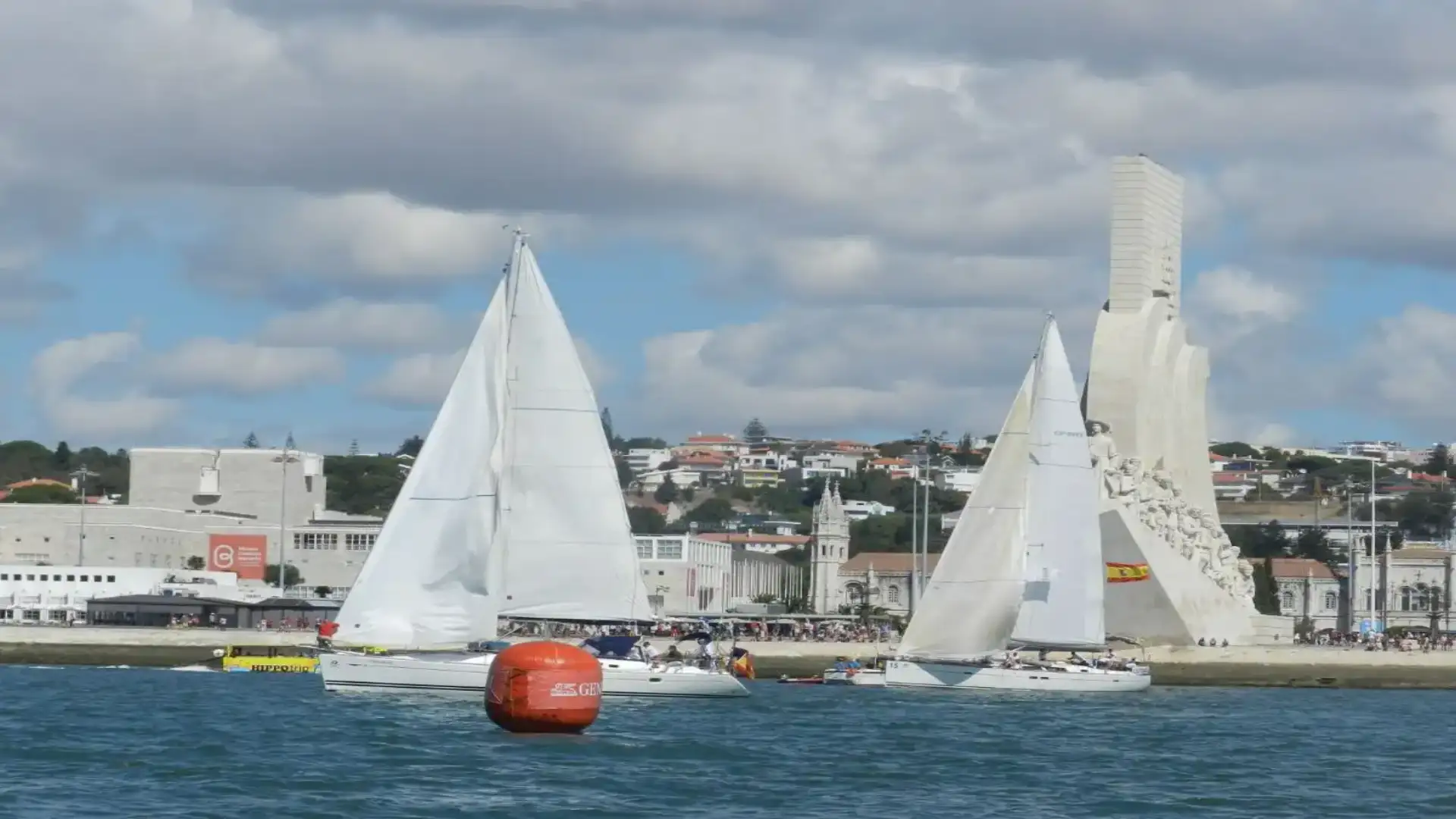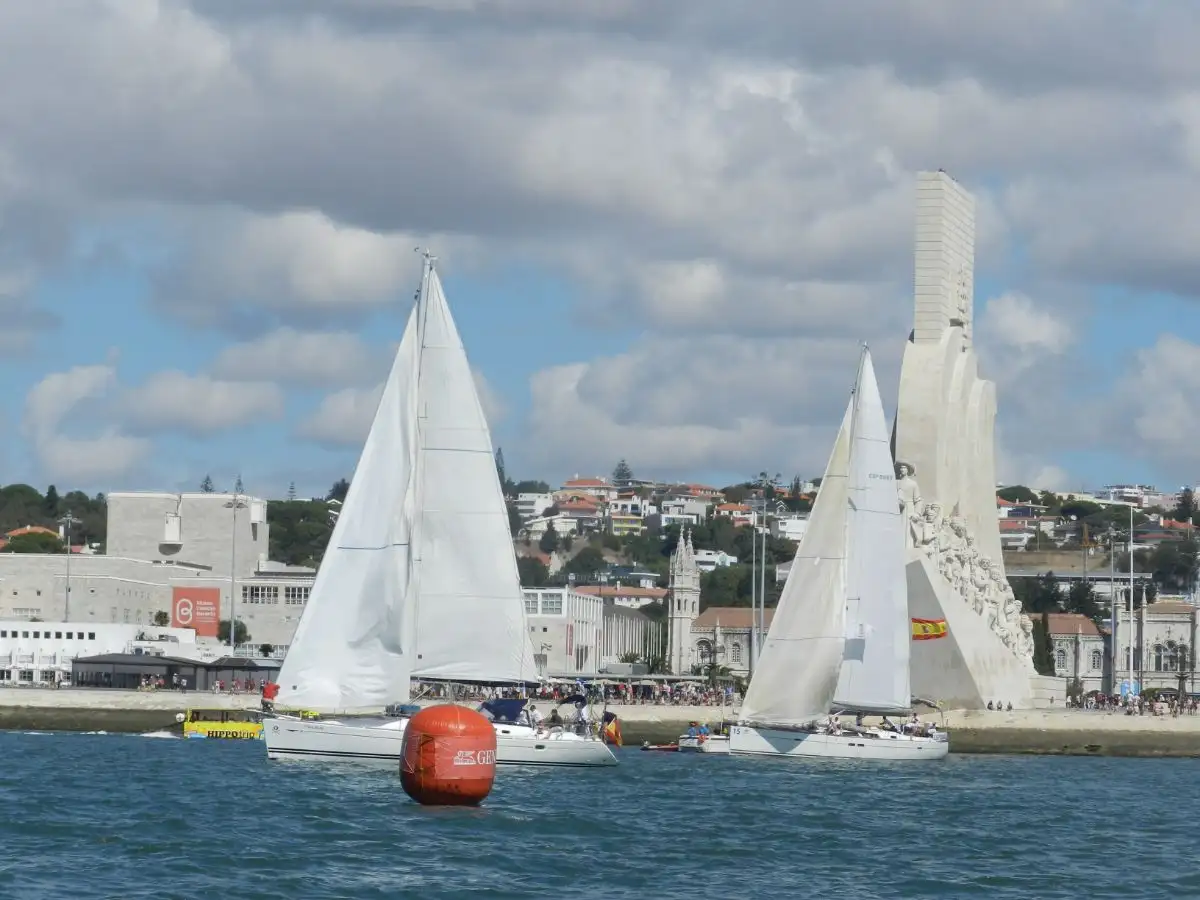
The I Discovery Race leaves Lisboa-Cascais and takes a course towards Las Palmas de Gran Canaria
The I Discovery Race leaves Lisboa-Cascais and takes a course towards Las Palmas de Gran Canaria

Photo: The Künga and the Nautilus were the first two ships to cross the exit line in front of the Monument to the Discovers.
The Monument to the Discovery was a direct witness to the departure of the 1st edition of the Discovery Race, regatta with exit from Lisbon and with the end in Las Palmas de Gran Canaria. At 1130 hours, the six ships involved in this 731-mile journey were given the punctual gunshot.
The wind of dyed in the exit and the tide in favor - coming down - to begin to remount the Tajo River in the direction of Cascais where it had located a beacon of passage that gave them the open sea exit. The Nautilus of the Spanish Navy and patronized by Oscar Rodríguez García de la Rosa was the first to ride the buoy two hours after the departure. The Künga (CN Punta Lagoa) of Jorge Mallo, the Sao Gabriel (AN Lisboa) of Mario Alfredo Silva Jara of Carvalho and the Protein 62 (CN Sada) of Manuel Batallán, and with the uniting Unai Basurko to the cane, the Galician ship had a small setback at the height of Cascais when it was entangled with a network of fishermen, but it could be solved in a few minutes. The two ships of the Portuguese Navy, the Zarco and the Polar - two school ships - closed the passage four hours later.
Manuel Batallán's Protein 65 makes for the first time the journey to the Canary Islands in regatta mode: "We have on several occasions made the journey between Galicia and the Canary Islands, but for us it is a new challenge to do so along with other ships. In the crew there are several cofrades and when they proposed to me it made me a lot of illusion and here we are, ready to enjoy."
The Portuguese Navy contributes two ships to the Discovery Race- Los Alisios. Captain Joao Neves Simoes, captains the largest ship in the fleet, the Polar 30 meters long. Neves Simoes explains that "this is a great initiative of the European Sailing Brotherhood and that we are honoured to be present," and adds that the race will "serve as an instruction for the cadets in ocean and sailing," and "the power to honor the Spanish and Portuguese Discovery is a great honour for us and the fact that there is also a ship of the Spanish Navy shows that we are united in a world marked by globalization."
The shipowner and master of the boat lisboeta Sao Gabriel, Mario Alfredo Silva also thanks "for a race to remember the discovers they gave so much to these two countries. It regates very special for all of us." The Sao Gabriel has four races to Azores and two to Madeira and will first premiere to the Canary Islands. The aim is to "enjoy the sea and the navigation."
The fleet must follow an established route with forced crossing points, to prevent, among other things, entering Atlantic areas where a rescue may be complicated. This is why the exit has taken place in front of the Monument of the Discovery and from there the fleet has been directed to a step by buoy located in front of Marina de Cascais that they left by port and from there they will take a course in the direction of the island of Alegranza where there will be a virtual beacon 3 miles from the Faro de Alegranza and that will leave by starboard, between Alegranza and the island of the Graciosa to the north of Lanzarote, to direct to the buoy of Castillete located at the gates of Las Palmas de Gran Canaria, where it will be the end of the line, and that will be in the direction of the race.
The I Discovery Race is promoted by the European Sailing Brotherhood, organized by the CN Cascais, the AN Lisbon, the RCN Gran Canaria and is sponsored by Canela Island, Golf & Beach Resorts.
© 2024 Nautica Digital Europe - www.nauticadigital.eu











